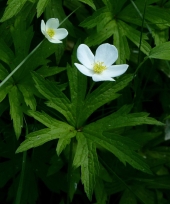Hello,
,
I am just looking for general ideas about plants that appear unhealthy, be they veggies, nearby landscaping plants, cover crops, or potential chop and drop material.
For example, a patch of wild bergamot (Monarda fistulosa) is near a potential new veggie bed location and has powdery mildew or something similar. Is this a potential risk to spread to the veggies? Mondarda is subject to this type of thing and the plants otherwise are growing well. What should I do about this? Ignore? Try to treat the monarda or soil? Alternately I could move/remove the Mondarda I suppose. I could limit that bed to certain non-susceptible veggies.
Related, for chop and drop, how picky should I be regarding outward appearance and health of the weeds being dropped? For instance, consider discolored clover leaves (likely due to heat stress and competition), or late season dandelion that is quite battered.
I have read suggestions that veggie plants showing unhealthy signs should be disposed of in the garbage, but that seems a bit extreme to me. Any thoughts on how to think about plants showing blight, disease, decay, or stress near veggies are appreciated!
Thanks for any ideas or musings, as I don't have much experience with food crops.







